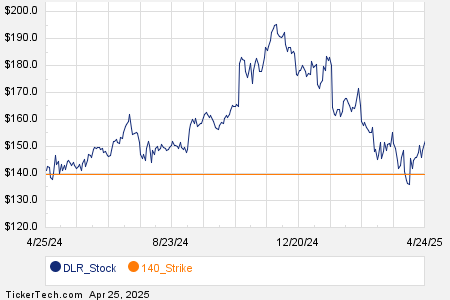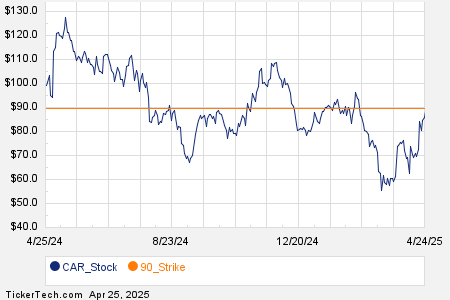The surge in chronic illnesses, technological advancements, and robust research and development initiatives have sparked increased demand for healthcare products and services. Plus, the healthcare industry’s ability to withstand economic fluctuations contributes to a “recession resistant” reputation for companies operating within this space.
That said, considering the recent bleak economic data, including disappointing GDP and inflation figures, investing in dividend-paying healthcare stocks is one way to help shore up your portfolio right now.
Given that, here are five dividend-paying healthcare stocks suitable for investors seeking stability and income.
Dividend Stock #1: Johnson & Johnson
Commanding a market cap of over $360.6 billion, New Jersey-based Johnson & Johnson’s (JNJ) pharmaceutical portfolio encompasses a range of therapeutic areas, including neuroscience, cardiovascular & metabolism, immunology, oncology, and more. The company’s key strength lies in its diversified business model, which spans pharmaceuticals, medical devices, and consumer products divisions.
Shares of Johnson & Johnson have gained 1.8% over the past six months.

The company boasts an impressive track record of 62 years of consecutive dividend growth. On April 16, Johnson & Johnson declared a quarterly dividend of $1.24 per share, a 4.2% increase from the previous payout, payable to its shareholders on June 4. The company’s annualized dividend of $4.96 translates to an attractive 3.3% dividend yield.
Johnson & Johnson stock has a consensus “Moderate Buy” rating. Out of 19 analysts covering the stock, seven recommend a “Strong Buy,” two give a “Moderate Buy,” and the remaining 10 advise a “Hold” rating. The mean price target is $174.01, representing an upside potential of 16.1% from current levels.
Dividend Stock #2: Merck & Co
Headquartered in New Jersey, healthcare company Merck & Co., Inc. (MRK) offers products in the areas of oncology, hospital acute care, immunology, neuroscience, and more. Valued at a market cap of $329.8 billion, the company’s most well-known drug, Keytruda, has garnered approval for various cancer types and has been pivotal in driving Merck’s consistent revenue growth in recent years.
Shares of Merck have rallied 28.3% over the past six months and 19.3% on a YTD basis.

Merck holds a solid track record of 13 years of consecutive dividend increases. On April 5, the company paid its shareholders a quarterly dividend of $0.77. It offers an annualized dividend of $3.08 per share, resulting in a dividend yield of 2.30%.
Analysts have a consensus rating of “Strong Buy” on Merck stock, with a mean target price of $137.27, which indicates an upside potential of about 5.5% from current levels. Out of 22 analysts covering the stock, 20 have a “Strong Buy,” and the remaining two give a “Hold” rating.
Dividend Stock #3: AbbVie
With a market cap of over $283.2 billion, Illinois-based pharmaceutical company AbbVie Inc. (ABBV) specializes in creating drugs for specific therapeutic fields, including immunology, chronic kidney disease, hepatitis C, women’s health, oncology, and neuroscience. Its blockbuster drug is Humira, an injectable treatment renowned for addressing autoimmune ailments.
Shares of AbbVie have gained 16% over the past six months and 3.7% over the past 52 weeks.

AbbVie is a Dividend Aristocrat, with over 25 years of consistent dividend growth. On Feb.15, the company declared a quarterly dividend of $1.55 per share, payable to its shareholders on May 15. It offers an annualized dividend of $6.20 per share, resulting in a yield of 3.87%
Overall, analysts have deemed AbbVie stock a “Moderate Buy,” with a mean target price of $178.42, which indicates an upside potential of about 10.4% from current levels. Out of 21 analysts covering the stock, 11 have a “Strong Buy” rating, two suggest a “Moderate Buy” rating, and the remaining eight advise a “Hold” rating.
Dividend Stock #4: Pfizer
New York-based Pfizer Inc. (PFE), with a market cap of $159.6 billion, offers various drugs and vaccines. Its operational structure encompasses six key business units: Oncology; Inflammation & Immunology; Rare Disease; Hospital; Vaccines; and Internal Medicine.
Shares of Pfizer are down 5% in the last six months, but have climbed 6.4% over the past month.

For Q2, Pfizer declared a dividend of $0.42 per share, payable to its shareholders on June 14. The company holds a 13-year track record of consecutive dividend increases. Its annualized dividend of $1.68 per share translates to a dividend yield of nearly 6%.
Pfizer stock has a consensus “Moderate Buy” rating. Out of 21 analysts covering Pfizer, eight recommend a “Strong Buy,” one gives a “Moderate Buy,” and 12 advise a “Hold” rating. The mean price target is $35.15, representing a potential upside of 25.5% from current levels.
Dividend Stock #5: Medtronic
Dublin-based Medtronic plc (MDT) distributes device-based medical therapies globally to healthcare systems, physicians, clinicians, and patients. The company is dedicated to advancing healthcare by leveraging cutting-edge technologies such as artificial intelligence (AI) and its extensive knowledge of the human body. The company’s market cap currently stands at $109.9 billion.
Shares of Medtronic have surged 17.2% over the past six months.

Like AbbVie, Medtronic is a Dividend Aristocrat, boasting an impressive track record of growing its annual dividend for 46 consecutive years. On April 12, the company paid its shareholders a quarterly dividend of $0.69 per share. The company’s annualized dividend of $2.76 per share translates to a dividend yield of 3.33%.
Analysts have a consensus rating of “Moderate Buy” for Medtronic stock, with a mean target price of $94.47. This indicates an upside potential of roughly 14% from current levels. Out of 25 analysts covering the stock, 10 have a “Strong Buy” rating, one advises a “Moderate Buy” rating, 13 give a “Hold” rating, and one suggests a “Strong Sell” rating.
On the date of publication, Sristi Suman Jayaswal did not have (either directly or indirectly) positions in any of the securities mentioned in this article. All information and data in this article is solely for informational purposes. For more information please view the Barchart Disclosure Policy here.
The views and opinions expressed herein are the views and opinions of the author and do not necessarily reflect those of Nasdaq, Inc.



